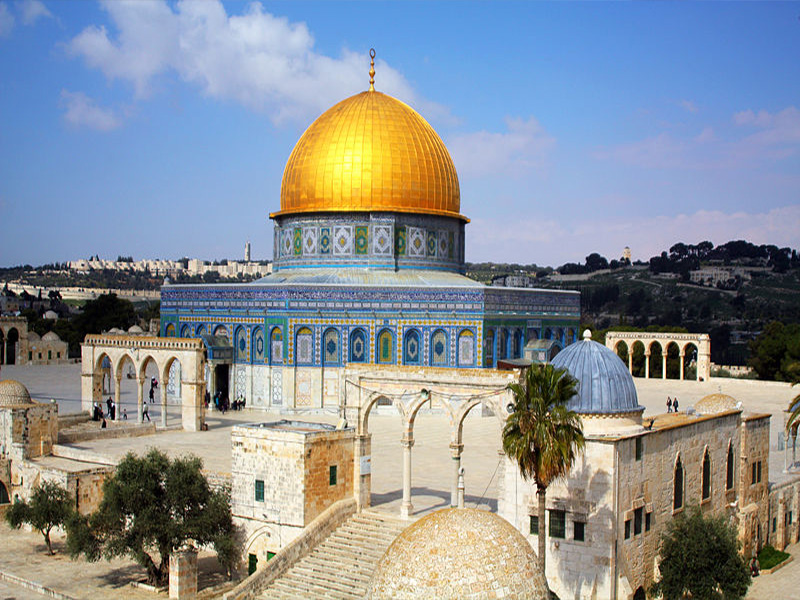I was up early on Nov. 27 to catch a bus from my Jerusalem hotel. Destination: the Temple Mount. Organized by Israel’s Government Press Office, the tour included a handful of Jewish journalists from North America and the U.K., plus others from locations like Turkey, Brazil and Bosnia and Herzegovina. We’d been warned to dress modestly and discard any Jewish-identifying items, like a Star of David necklace. Those of us who sported kippot either removed them or wore hats. We were told not to touch anything.
Climbing the rickety wooden ramp that winds above the women’s prayer section of the Kotel, you get the feeling that you’re walking between worlds, and in a very real sense, you are. At the top, there’s a small staging area, where we had a moment to gather our thoughts. It was hard not to notice the riot gear piled next to the narrow entrance ahead.
For most of the group, myself included, it was our first time on the Temple Mount. I can’t speak for any of my fellow travellers, but few experiences have been as powerful for me as the two-and-a-half hours I spent there that day. Almost a week later, I’m still awe-struck. The beauty, the grandeur, the history, the politics – it literally took my breath away.
As if it were a natural reflex, I recited the Shema in my head (but not on my lips – a big no-no with the Waqf, the Muslim religious authority that guards the Temple Mount), an acknowledgment of my foundational connection to the place and an expression of gratitude that I got the opportunity to experience it. I’d be lying if I said I didn’t feel at least a touch of the miraculous in that moment.
READ: FROM YONI’S DESK: THE INTERNATIONAL CRIMINAL COURT’S ISRAEL OBSESSION
Later that day, I went looking for an old friend in the Old City’s Jewish Quarter. We had been close growing up – we had attended the same day school, switched to another day school at the same time, spent four years together at yeshivah high school and then a year and a half more studying at the same seminary in Israel.
That was where our lives began to take different paths. He ended up becoming a rabbi, and today teaches at one of the largest yeshivot in the Old City, mentoring young Jews from all walks of life. The last time we’d seen each other was at my wedding more than nine years ago, where he signed my ketubbah.
Tracking the Old City’s narrow corridors to where I was told the yeshivah would be, I was sure I was lost. To my right, a man paced up and down an alley, talking on his cellphone. I asked for directions and he motioned me the way to go. An instant later, he said, “Yoni?” It was him.
We had maybe 15 minutes together, just enough time to catch up and snap a photo for posterity. As we looked down at the Kotel, an IDF unit mustered in the courtyard below, snapping to attention at the call “Amod Dom” (stand to attention). We’d done the same as kids in Bnei Akiva, and now here we were again. So much had changed, but Jerusalem still brought us back together.







